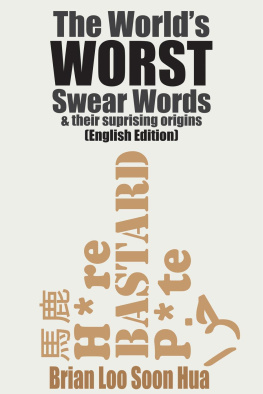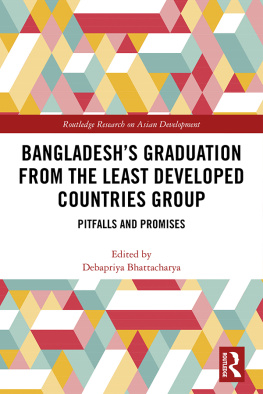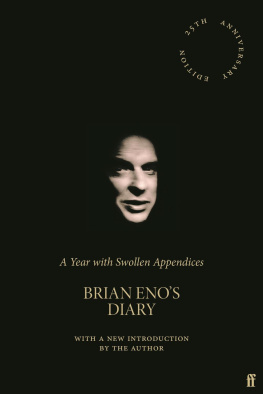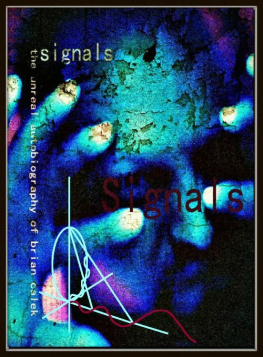First published in the UK in 2013 by
Intellect, The Mill, Parnall Road, Fishponds, Bristol, BS16 3JG, UK
First published in the USA in 2013 by
Intellect, The University of Chicago Press, 1427 E. 60th Street,
Chicago, IL 60637, USA
Copyright 2013 Intellect Ltd
All rights reserved. No part of this publication may be reproduced, stored in a retrieval system, or transmitted, in any form or by any means, electronic, mechanical, photocopying, recording, or otherwise, without written permission.
A catalogue record for this book is available from the British Library.
Cover designer: Holly Rose
Cover photo: Norman Leslie
Production manager: Jelena Stanovnik
Copy-editor: MPS Technologies
Typesetting: Contentra Technologies
Print ISBN: 978-1-8415-0473-5
ePDF ISBN: 978-1-78320-126-6
ePub ISBN: 978-1-78320-125-9
Printed and bound by Charlesworth Press, UK
A book like this incurs an enormous number of debts. Without the help, support and encouragement of a large number of people this book would not have been produced. First, we must acknowledge the support of the University of Liberal Arts Bangladesh (ULAB) on a number of levels. In particular, we must thank Kazi Shahid Ahmed, founder and President of the Board of Trustees and Dr. Kazi Anis Ahmed, Vice President of the Board of Trustees and an active force within the university community. Professor Rafiqul Islam, former Vice Chancellor and Professor Emeritus of ULAB, who cast a benign eye over our efforts, and Professor Imran Rahman, Vice Chancellor of ULAB, who actively intervened at a number of times to ensure the book saw the light of day.
We must also acknowledge Shamsul Islam, whose idea this book was (along with Md Asiuzzaman), but who, unfortunately left ULAB for greener pastures. Zaman, unfortunately was unable to complete his contribution due to overseas study and other external pressures.
The staff of ULAB have always been supportive and helpful, especially Kader Mohammad (who produced the index), Trisha Falguni, Tauhid Ziauddin, and Md Muzammel Haque (Sohel) who ensured that our computers always worked, at a number of critical moments.
We also owe a great debt of gratitude to Jessica Mudditt who, at short notice, stepped and undertook the task of copy editing many of the papers.
The students of ULAB have always been a joy to teach. Eager to learn, friendly and open minded they have listened attentively to the ideas explored in this book, pointing out things we had wrong and always reminding us to adopt a less Eurocentric view of the world.
When this book was in its final stages of production, we learned of the tragic death of Tareque Masud, filmmaker and friend to many of the contributors of this book. Tareque and Catherine Masud have been pivotal figures in the growth of contemporary Bangladeshi cinema. He will be sorely missed.
We must also thank the anonymous reader whose comments revealed many of our shortcomings and whose suggestions and recommendations greatly improved the content of the book. However, any errors contained herein are ours alone!
Finally, we have always appreciated the patience and help of Jelena Stanovnik of Intellect Books who guided this book through to its publication.
Tables, Boxes, and Matrices
Table 2.1: Bangladeshi socio-economic data
Table 2.2: Bangladeshi media at a glance
Table 2.3: Access to media in Bangladesh (2005)
Table 2.4: Major media companies in Bangladesh
Box 2.1: Press Laws and Regulations in Bangladesh
Table 2.5: Number of newspapers and periodicals in Bangladesh, 2010
Table 2.6: Major daily newspapers (Bangla and English) of Bangladesh, 2010
Box 2.2: Bangladeshi radio
Box 2.3: Film Production Statistics for the Twenty-first Century
Box 2.4: Film Censorship Activity in 2009
Table 3.1: Main features of Bangladeshi newspaper industry between the pre- and post-1990 period
Table 3.2: Circulation of top Bengali and English national dailies as of 26 January 2011
Table 4.1: Reach of Radio in Bangladesh
Table 4.2: Reach of Radio in Rural Bangladesh
Table 4.3: Media Access by Household Income in Bangladesh
Table 4.4: Media Reach in Bangladesh
Table 4.5: Description of Private Commercial FM Stations in Bangladesh
Table 4.6: Description of Select Internet Radio Stations in Bangladesh
Table 4.7: Approved Community Radio Stations in Bangladesh
Table 4.8: Description of International Radio Stations with Presence in Bangladesh
Table 4.9: Listenership to Different Radio Stations in Bangladesh
Table 4.10: Media Access in Rural Bangladesh (2009)
Table 4.11: Frequency of Using Radio in Ten Bangladesh Districts
Table 4.12: Reasons for Listening to Radio (2006)
Table 10.1: Summary of Popular Indian soap operas
Table 10.2: Summary of popular Bangladeshi soap operas
Table 12.1: Definitions of Digital Bangladesh
Table 12.2: Goals/objectives of Digital Bangladesh
Table 12.3: Stakeholders/beneficiaries of Digital Bangladesh
Table 12.4: Scope of Digital Bangladesh
Table 12.5: Pillars/components of Digital Bangladesh
Table 12.6: Roadmap of Digital Bangladesh
Table 12.7: Challenges of Digital Bangladesh
Table 12.8: Feasibility of Digital Bangladesh
Table 12.9: Policy Recommendations on Digital Bangladesh
Table 13.1: Key events in the development of television in Bangladesh
Table 13.2: Patterns of TV Licenses Ownership
Table 13.3: Reach of Television as % of the population (19952009)
Table 13.4: Laws and Regulations Governing the Media Industries
Table 15.1: Lists of selected early independent short films
Table 15.2: Lists of selected films of the second phase (19931999) of independent cinema movement
Table 15.3: Format, length and funding details of selected post-2000 feature films
Table 17.1: Bangladesh: integrity indicators scorecard
Table 17.2: Program distribution percentage in select TV stations
Table 17.3: Viewership of Top TV Channels in metropolitan areas of Bangladesh
Table 18.1: Practitioners main discourses about PR in the 1970s
Table 18.2: Practitioners main discourses about PR in the 1980s
Table 18.3: Practitioners main discourses about PR in the 1990s
Table 18.4: Practitioners main discourses about PR in the 2000s
Table 18.5: Main Discourses on PR Prospects in Bangladesh from 1970s to 2000s
Table 18.6: ICT Penetration in Bangladesh (2009)
Table 20.1: Data indicating Dhaka residents rejection of political parties
Table 20.2: Data indicating youths rejection of politics
Table 20.3: Data indicating Dhaka residents acceptance of democracy
Table 20.4: Data indicating youths acceptance of lifestyle politics










